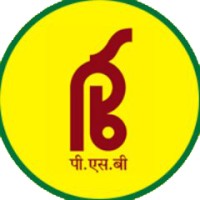Company Cyber Security Posture
NANA
NA Company Details
NA
NA
NA
NA
NA
NA
Scan still pending
NA
NA
Between 200 and 800
This score is AI-generated and less favored by cyber insurers, who prefer the TPRM score.
 NA Global Score
NA Global Score.png)

Company Scoring based on AI Models
| Model Name | Date | Description | Current Score Difference | Score |
|---|---|---|---|---|
| AVERAGE-Industry | 03-12-2025 | This score represents the average cybersecurity rating of companies already scanned within the same industry. It provides a benchmark to compare an individual company's security posture against its industry peers. | N/A | Between 200 and 800 |
Company Cyber Security News & History
| Entity | Type | Severity | Impact | Seen | Url ID | Details | View |
|---|
Company Subsidiaries

NA
Access Data Using Our API

Get company history
.png)
NA Cyber Security News
Cyber Security in Finance: Key Threats and Strategies
Explore key cybersecurity threats in finance and effective strategies to protect financial organizations with cybersecurity solutions.
Philippines’ Security Bank taps ACI Worldwide to modernise payments
ACI's enterprise payments platform will modernise the bank's payments infrastructure.
A Trio of US Treasury Hacks Exposes a Pattern Making Banks Nervous
In three major hacks, Treasury didn't deploy cybersecurity measures that could have prevented the attacks or flagged the intruders sooner, ...
How banking cybersecurity platforms add business value
In today's interconnected world, financial institutions face a daunting challenge: cybersecurity complexity. It's not just an IT problem; ...
Operational resilience of the financial sector
CBEST's purpose is to provide a prioritised assessment that allows firms/FMIs to better understand weaknesses and vulnerabilities in their ...
Cybersecurity And Innovation: The Twin Pillars Of Modern Payments
Customers of banks and payment providers are increasingly falling victim to scams. In 2023, nearly 36% of all banking customers in the US ...
Cybersecurity for Financial Services: Best Practices in 2023
Finance institutions carry the immense responsibility of managing and protecting highly sensitive data. With the critical nature of customer ...
Women Know Cyber: 150 Fascinating Females Fighting Cybercrime
150 Fascinating Females Fighting Cybercrime. Role models for students, parents, educators, and the cybersecurity community.
In Other News: Bank of America Warns of Data Breach, Trucking Cybersecurity, Treasury Hack Linked to Silk Typhoon
2025 trucking cybersecurity report, Bank of America discloses data breach, Silk Typhoon behind US Treasury hack.

NA Similar Companies

Bank Mega
Perjalanan Bank Mega berawal pada tahun 1969, dengan nama PT Bank Karman di Surabaya. Kemudian bertransformasi menjadi Mega Bank pada tahun 1992, dan berpindah lokasi ke Jakarta. Pada tahun 1996, Chairul Tanjung dengan PARA GROUP, yang kini dikenal dengan CT Corpora, mengambil alih dan membuat gebra

YES BANK
YES BANK is a leading Indian private sector bank committed to transforming the financial landscape of India. With over 1200 branches nationwide and a dedicated team of YES BANKers, we strive to deliver exceptional banking solutions and empower individuals, businesses and communities to thrive. At Y

Punjab & Sind Bank
Punjab and Sind Bank was established in the year 1908, under the far-sighted vision of luminaries like Bhai Vir Singh, Sir Sunder Singh Majitha and Sardar Tarlochan Singh. It is a government-owned bank, headquartered at New Delhi, India. The principle mission of its foundation involves economic ai

First Citizens Bank
First Citizens Bank helps personal, business, commercial and wealth clients build financial strength that lasts. Headquartered in Raleigh, N.C., First Citizens has built a unique legacy of strength, stability and long-term thinking that has spanned generations. First Citizens offers an array of gene

AU SMALL FINANCE BANK
The dream started two decades ago by Mr. Sanjay Agarwal, a merit holder Chartered Accountant and a first generation entrepreneur, along with his proficient team. Together, the dexterous team embarked on a journey of excellence while enriching lives along the way. What started off as a dream to be

Regions Bank
Regions Financial Corporation is a member of the S&P 500 Index and is one of the nation’s largest full-service providers of consumer and commercial banking, wealth management, and mortgage products and services. Regions serves customers across the South, Midwest and Texas, and through its subsidiary

Frequently Asked Questions
Explore insights on cybersecurity incidents, risk posture, and Rankiteo's assessments.
NA CyberSecurity History Information
How many cyber incidents has NA faced?
Total Incidents: According to Rankiteo, NA has faced 0 incidents in the past.
What types of cybersecurity incidents have occurred at NA?
Incident Types: The types of cybersecurity incidents that have occurred include .
Additional Questions
What Do We Measure?
















Every week, Rankiteo analyzes billions of signals to give organizations a sharper, faster view of emerging risks. With deeper, more actionable intelligence at their fingertips, security teams can outpace threat actors, respond instantly to Zero-Day attacks, and dramatically shrink their risk exposure window.
These are some of the factors we use to calculate the overall score:
Identify exposed access points, detect misconfigured SSL certificates, and uncover vulnerabilities across the network infrastructure.
Gain visibility into the software components used within an organization to detect vulnerabilities, manage risk, and ensure supply chain security.
Monitor and manage all IT assets and their configurations to ensure accurate, real-time visibility across the company's technology environment.
Leverage real-time insights on active threats, malware campaigns, and emerging vulnerabilities to proactively defend against evolving cyberattacks.




